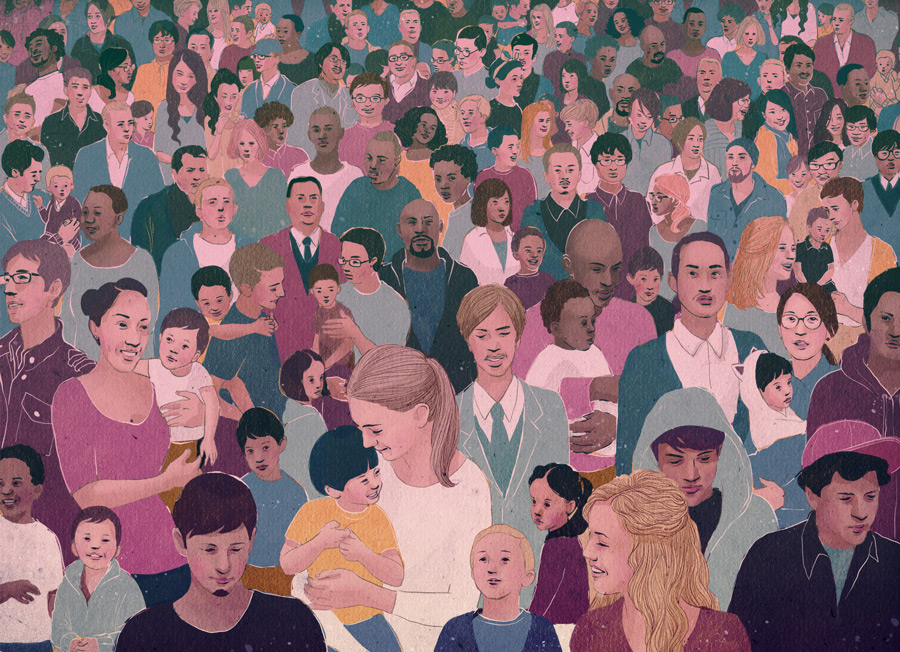
THIS ARTICLE IS MORE THAN FIVE YEARS OLD
This article is more than five years old. Autism research — and science in general — is constantly evolving, so older articles may contain information or theories that have been reevaluated since their original publication date.
A second look at 64 genes implicated in autism has bolstered evidence for the strongest candidates and renewed interest in others with more modest ties to the disorder. The approach, described 24 November in Nature Communications, will help researchers reconcile the reams of data emerging from large sequencing studies1.
The study looked at 3,486 people with autism and 2,493 of their unaffected siblings. The researchers used a relatively inexpensive and easy sequencing method to look at genes known to be mutated in at least one person with autism. They found a strong autism link for 9 of the 64 genes, including 2 that previously were only marginally associated with the disorder.
By studying individual genes in thousands of people, the researchers say they hope to learn more about the impact of these rare mutations.
“What can you tell a patient if a mutation’s been seen only once in a sequencing study of 2,000 [people]? You can’t tell them that it’s causal,” says lead researcher Evan Eichler, professor of genome sciences at the University of Washington in Seattle. “We just don’t have a lot of information in terms of which ones are the really important, high-impact genes.”
The study strengthens the link to autism for CHD8, PTEN, TBR1, ADNP and GRIN2B — genes known to be strong candidates. It also reveals an important role for CHD2, a gene mainly associated with epilepsy, and SYNGAP1, which is mutated in some people with intellectual disability. Both genes have been linked to autism, but are primarily associated with other disorders.
“We spend a lot of money and effort on sequencing, so being able to identify the good ones out of various candidates is an important next step,” says Ivan Iossifov, assistant professor at Cold Spring Harbor Laboratory in New York, who was not involved with the work. “Being more confident about each [gene] will hopefully catalyze the community to explore them more deeply.”
Unusual suspects:
The study also provides the first strong evidence linking lesser-studied genes to autism.
One of these is PAX5, a gene needed for neuron development that had turned up in one person with autism. The new study found two more people with mutations in the gene.
“There was a hint of a signal [for PAX5], but it certainly wasn’t rising to the top,” says Stephan Sanders, assistant professor of psychiatry at the University of California, San Francisco, who was not involved in the work. “Here they show it’s nicely standing above the expectation line.”
“We spend a lot of money and effort on sequencing, but being able to identify the good ones out of various candidates is an important next step.”
The second unexpected candidate is TRIP12 — a gene Eichler once admittedly dismissed. “I was not enthusiastic about TRIP12 going in. Simply by its name — a thyroid receptor — how could that possibly be relevant?” Eichler says. “But maybe its name is not really indicative of what it does.”
Other genes turned out to seem less relevant to autism than researchers once thought. A 2012 study of 44 candidate genes in about 2,500 people with autism highlighted six genes, including TBL1XR12. But in the new study, this gene fell shy of significance, highlighting the importance of validating risk factors in large numbers of people.
Eichler and his team plan to collaborate with several teams in Europe to sequence a total of 250 genes in 10,000 people with autism, intellectual disability or developmental delay and 10,000 controls. They may then contact participants to characterize the features associated with mutations in each gene.
This so-called ‘genetics-first’ approach — grouping people first by their genetics and then defining symptoms — has been used to detail the symptoms in people with mutations in CHD8 or ADNP, for example. Ultimately, the researchers hope to develop targeted treatments for different groups of individuals.
“If you apply treatments blindly to all autistic kids, you’re going to get kind of a null result because you’re treating apples and oranges with a drug that should only be applied in this case to apples,” says Eichler.
Understanding the effects of different autism-linked mutations can also help parents manage their expectations for their child’s development, according to Thomas Frazier, director of the Cleveland Clinic’s Center for Autism.
“These mutations are going to come with different kinds of risk,” Frazier says. “We don’t currently have frequently used clinical methods that can detect these; we’re making good progress, but we’ve got a long way to go.”
References:
1: O’Roak B.J. et al. Nat. Commun. 5, 5595 (2014) PubMed
2: O’Roak B.J. et al. Science 338, 1619-1622 (2012) PubMed
By joining the discussion, you agree to our privacy policy.